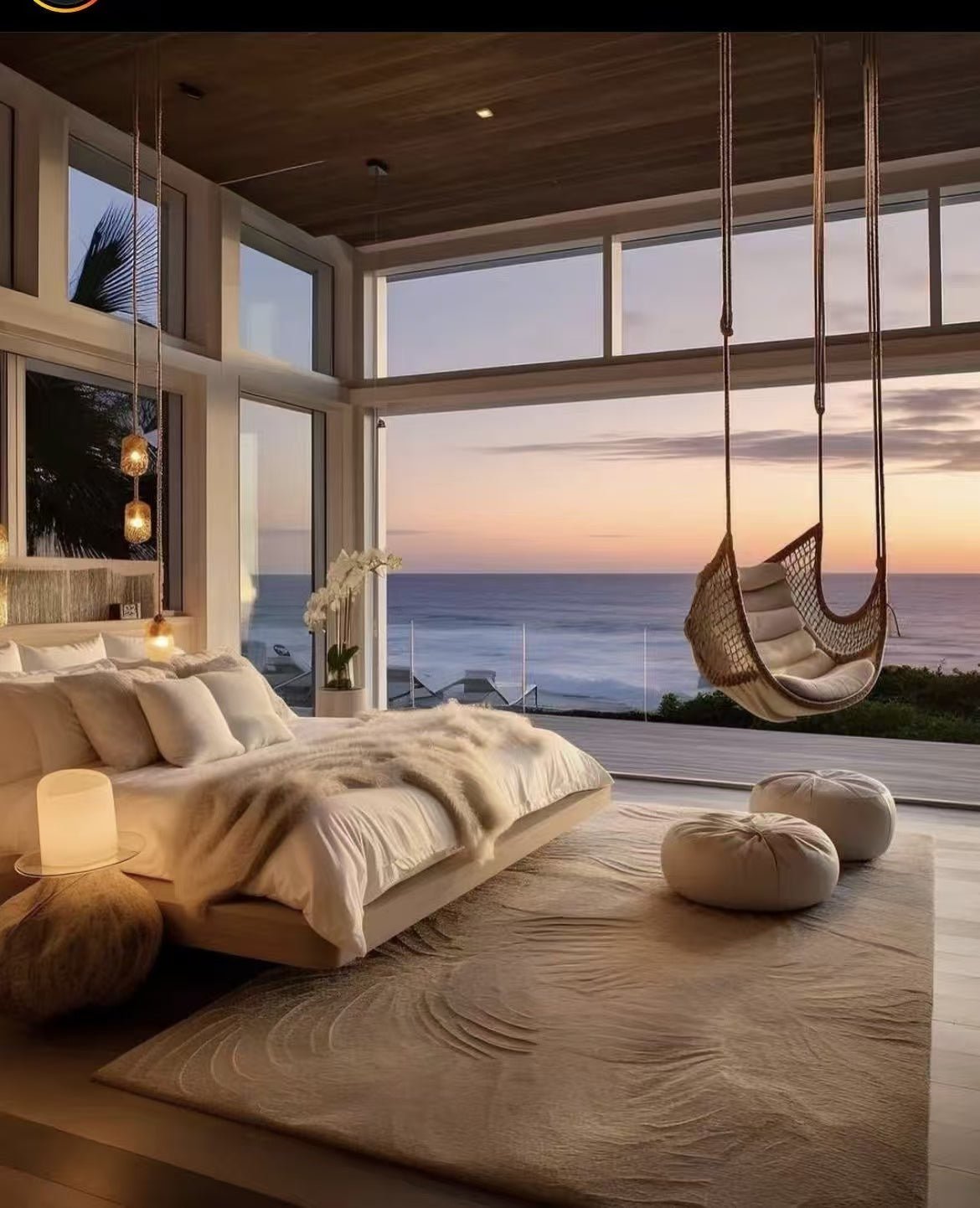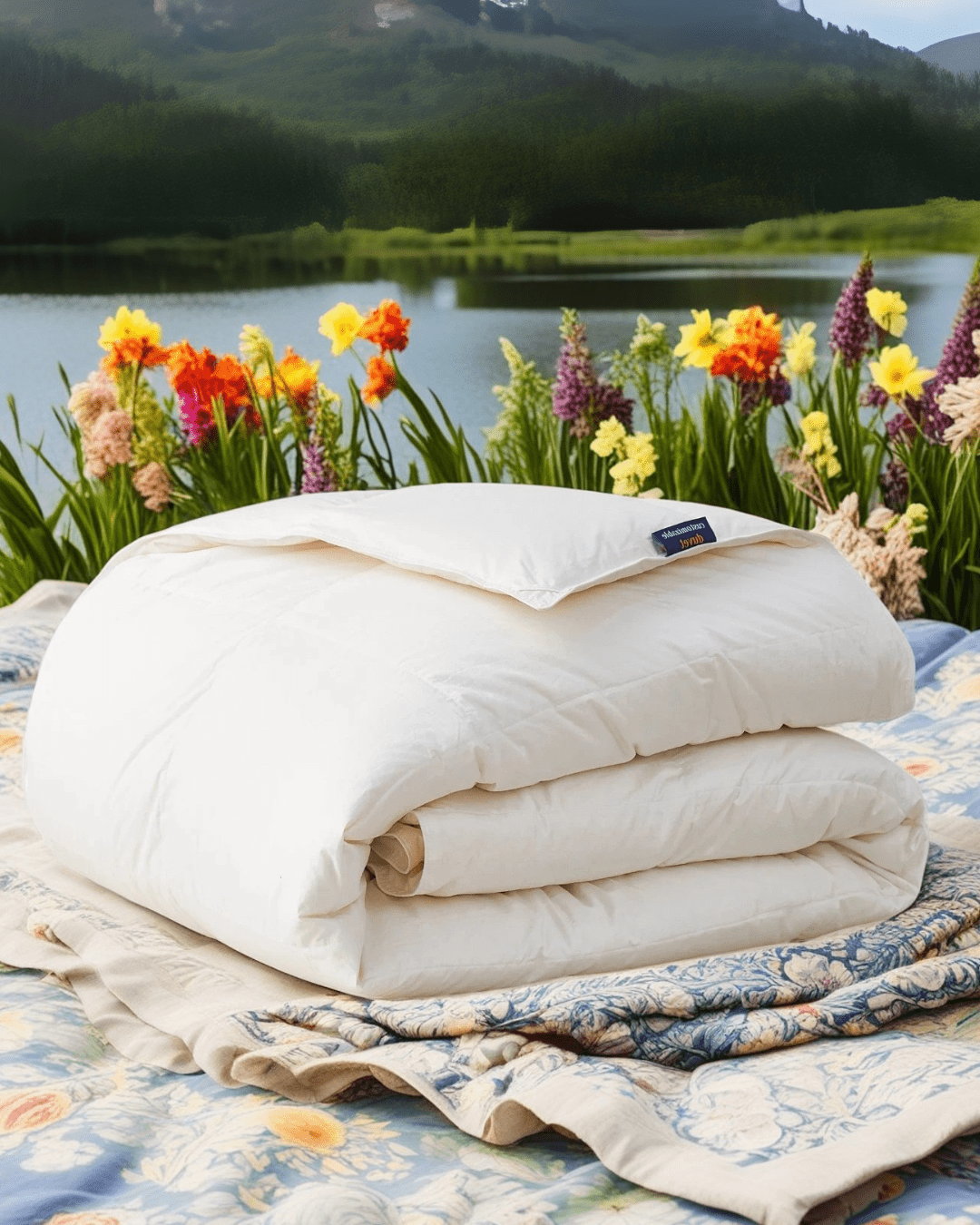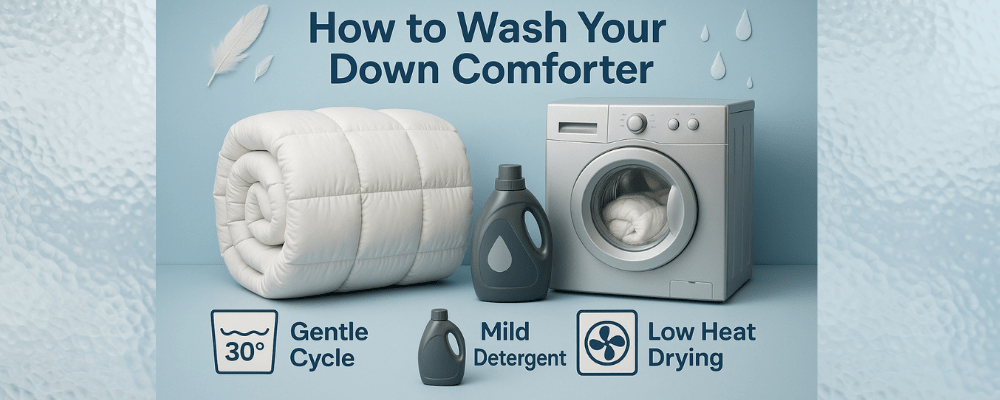When it comes to choosing a down comforter, you'll likely come across two main types of construction: sewn-through and baffle box. Both have their own benefits and drawbacks, but baffle-box construction is often preferred.
Sewn-through Construction:

Sewn-through construction is a straightforward process that involves stitching the top and bottom layers of the comforter together, creating small pockets that are filled with down. The stitching runs through the comforter, connecting the two layers and creating a pattern of squares or diamonds.
Advantages of Sewn-through Construction:
One of the main advantages of sewn-through construction is its affordability. This type of construction requires less material and labor compared to baffle box construction, making it a more budget-friendly option. It's also lightweight and thinner, making it ideal for those who live in warmer climates or prefer a less bulky comforter.
Another advantage of sewn-through construction is that it creates a flatter and smoother surface, which is ideal for those who prefer a more streamlined look. This type of construction also creates a tighter seal, ensuring that the down stays in place and doesn't shift around over time. Plus, the simplicity of sewn-through construction means that it's easier to care for and maintain.
Disadvantages of Sewn-through Construction:
One disadvantage of sewn-through construction is that it can sometimes result in cold spots, which occur when the down shifts away from the stitching. However, high-quality sewn-through comforters will have tighter stitching and better distribution of the down, reducing the risk of cold spots. Additionally, sewn-through construction may not provide as much loft or fluffiness as baffle box construction, which is preferred by some individuals.
Baffle Box Construction:

Baffle box construction involves the use of internal walls, or baffles, to create individual compartments for the down. The baffles are usually made of fabric, and they run perpendicular to the top and bottom layers of the comforter. The down is placed inside the compartments, and then the baffles are stitched closed.
Advantages of Baffle Box Construction:
One advantage of baffle box construction is that it eliminates cold spots, because the down is held securely in place within each individual compartment. This can result in a more even distribution of warmth throughout the comforter. Additionally, the use of baffles can create a fluffier, more luxurious feel, which some people prefer.
Disadvantages of Baffle Box Construction:
One disadvantage of baffle box construction is that it is generally more expensive than sewn-through construction, due to the extra materials and labor involved. Additionally, because the baffles create individual compartments, the comforter may be heavier and bulkier than a sewn-through comforter of the same size.
Which is Better?
Ultimately, the choice between sewn-through and baffle box construction comes down to personal preference and needs. If you live in a warmer climate, prefer a lighter comforter, or are on a tighter budget, sewn-through construction may be the best option. On the other hand, if you live in a colder climate or want a fluffier and more luxurious comforter, baffle box construction may be the better choice.
In conclusion, sewn-through construction has several advantages that shouldn't be overlooked. It's an affordable, lightweight, and easy-to-care-for option that provides a smooth and streamlined appearance. While baffle box construction may be preferred by some, sewn-through construction is a practical and functional choice for those who value simplicity and value.



